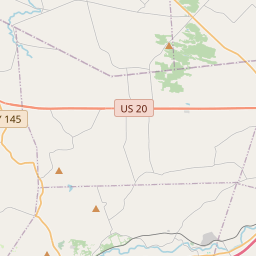Michael Righter
Historical marker location:
Duanesburg, New York
( Marker can be reached from Duanesburg Road (New York State Route 7), on the right when traveling east.)
Marker installed: 2017







© OpenStreetMap contributors
Legends & Lore
Loading...
Searching for other points of interest within 3 miles of this location.New York State was the site of the deadliest terrorist attack in United States history prior to 9/11. In 1993, a bomb planted in the World Trade Center by Islamic extremists killed six people and injured more than a thousand others.
About Schenectady County
Schenectady County Timeline
Schenectady County, located in eastern New York, has a rich and diverse history that dates back to the early 17th century. The region was originally inhabited by the Mohawk Native American tribe, who established settlements along the Mohawk River. European contact began in the early 1600s, when Dutch traders from the Netherlands began to explore the area. In 1661, a Dutch settlement was established, which later became the city of Schenectady.
In the late 17th century, Schenectady became an important center for fur trade and played a significant role in the colonial economy. However, the settlement was not without its hardships. In 1690, during the French and Indian War, the community was attacked and partially destroyed by a French and Native American force. This event, known as the Schenectady Massacre, resulted in the deaths of numerous residents and marked a devastating chapter in the region's history.
Schenectady County continued to grow throughout the 18th and 19th centuries. The area became known for its manufacturing industry, particularly in the production of brooms, locomotives, and electrical equipment. The establishment of General Electric in the late 19th century brought significant economic growth to the region and solidified Schenectady's reputation as an industrial powerhouse.
In the 20th century, Schenectady County experienced both successes and challenges. The decline of the manufacturing industry had a significant impact on the local economy, but efforts to diversify and revitalize the region have been ongoing. Today, Schenectady County is home to a vibrant community with a mix of urban and suburban areas, and it continues to be a cultural and economic hub in eastern New York.
In the late 17th century, Schenectady became an important center for fur trade and played a significant role in the colonial economy. However, the settlement was not without its hardships. In 1690, during the French and Indian War, the community was attacked and partially destroyed by a French and Native American force. This event, known as the Schenectady Massacre, resulted in the deaths of numerous residents and marked a devastating chapter in the region's history.
Schenectady County continued to grow throughout the 18th and 19th centuries. The area became known for its manufacturing industry, particularly in the production of brooms, locomotives, and electrical equipment. The establishment of General Electric in the late 19th century brought significant economic growth to the region and solidified Schenectady's reputation as an industrial powerhouse.
In the 20th century, Schenectady County experienced both successes and challenges. The decline of the manufacturing industry had a significant impact on the local economy, but efforts to diversify and revitalize the region have been ongoing. Today, Schenectady County is home to a vibrant community with a mix of urban and suburban areas, and it continues to be a cultural and economic hub in eastern New York.
Schenectady County Timeline
This timeline provides a concise overview of the key events in the history of Schenectady County, New York.
- 1661: Dutch explorer Arent van Curler settles in the area that would become Schenectady County.
- 1684: Schenectady is officially incorporated as a town.
- 1690: Schenectady is attacked and burned during the Schenectady Massacre by French and Native American forces.
- 1772: Schenectady becomes a city.
- 1808: The Erie Canal is completed, bringing economic growth and prosperity to Schenectady County.
- 1828: Union College is founded in Schenectady.
- 1886: General Electric is established in Schenectady, becoming a major employer and shaping the county's industrial development.
- 1938: The Great Flood of 1938 devastates Schenectady County, causing significant damage and loss of life.
- 1959: Construction of the New York State Thruway through Schenectady County begins.
- 1978: Proctor's Theater in Schenectady undergoes restoration and reopens as a performing arts center.
- 1990s: Schenectady County experiences economic revitalization, focusing on technology and research industries.